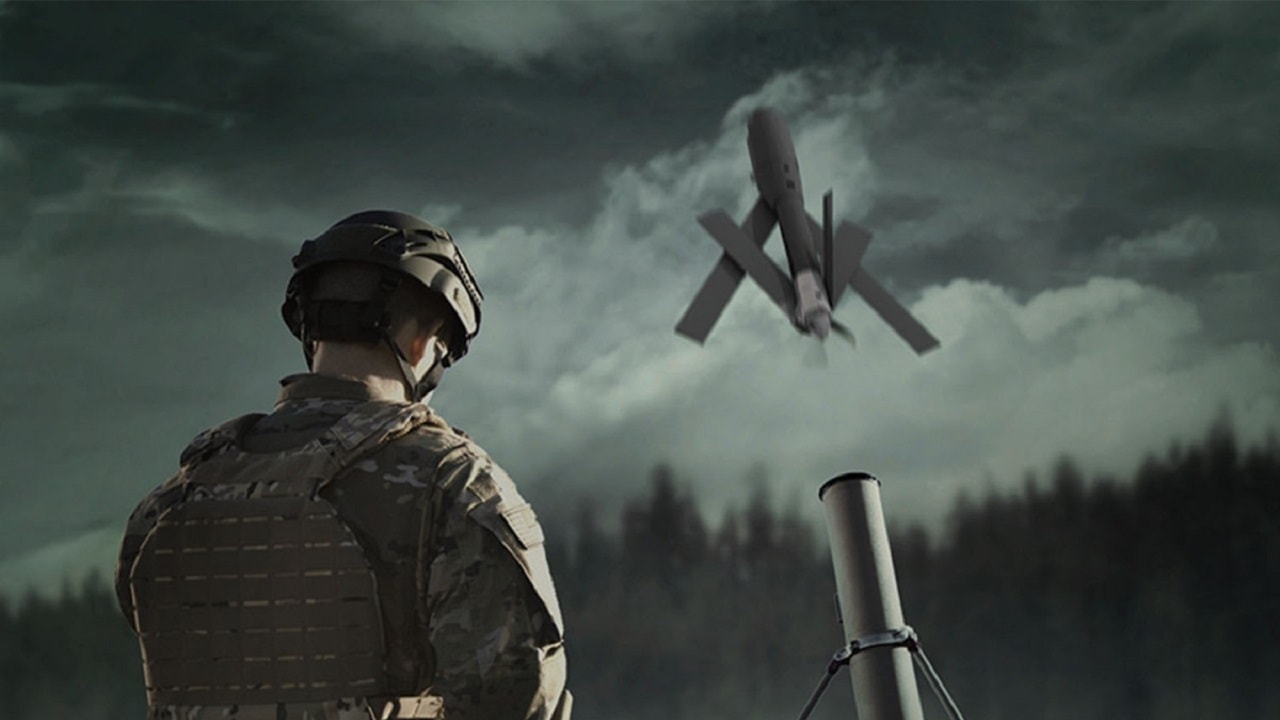Switchblade 300 Used to Target Russian Positions: There is an old idiom that “you don’t bring a knife to a gunfight” – meaning you should never enter a confrontation or challenging situation without being adequately equipped or prepared. However, in the 21st century, Ukraine has proven you can bring a “switchblade” to a gun or even a tank fight.
Here Comes the Switchblade
At least if it is the Switchblade 300 loitering munition.
Earlier this month, video footage was shared by Rob Lee, senior fellow of the Foreign Policy Research Institute, showing one of the low-cost drones striking a Russian position in the Eastern Donbas region of occupied Ukraine.
It was just the latest such video that showed how the so-called “suicide drone” has been employed against Russian fixed positions, ammunition dumps, bunkers, and even tank columns.
Since the early stages of Russia’s unprovoked and wholly unwarranted invasion, the Switchblade drones have been seen as a potential game changer.
Unlike larger drones, which can carry a payload and then return to their base, the Switchblades are actually “one-and-done” flying ordnance that carries an internal warhead.
Each is essentially a “kamikaze” that can fly to the target, loiter until there is an apt opportunity, and then strike.
Two Models
There are currently two models in production, and these include the “smaller” Switchblade 300 – the version seen in the aforementioned video – and a larger Switchblade 600, which can carry a larger warhead.
The 300 model is meant to serve as an anti-personnel weapon, while the larger 600 version can be used to target tanks and armored vehicles.
Each drone can be carried by a small crew, and deployed in a matter of minutes.
Both models can fly upwards of 100 miles per hour (MPH) and each has a range of approximately 24 miles.
The drones were designed to have a “loiter time” of around 40 minutes. Its attack scheme can be called off if no target of opportunity presents itself, and it can return to the operators.
Targeting of the Switchblades is accomplished by GPS, but the drones can still be manually controlled as well.
Developed for the U.S. Military
Though the weapons have been proven in battle in Ukraine, the development of the Switchblade actually began in 2011.
It was initially conceived by the U.S. Air Force Special Operations Command (AFSOC), and developed with insight from the United States Army as a platform to allow warfighters to respond to enemy ambushes in Afghanistan.
The drones are currently being produced by their developer, AeroVironment, at a secure location.
The Army had awarded the company a $4.9 million contractor for the “rapid fielding” of an undisclosed number of Switchblades to forces in Afghanistan in 2011, and a year later that Army expanded that contract by another $5.1 million.
Several hundred drones have been sent to aid the Ukrainian war effort.
Video Star
This month’s video is also far from the first that made the Switchblade a star.
It was nearly a year ago that footage of the loitering munitions used against Russian T-72 main battle tanks (MBTs) circulated on social media.
In one 45-second clip, posted by members of the Ukrainian Special Operations Forces (SSO) – a unit modeled after NATO reaction forces – the footage was even accompanied by the iconic theme music from Star Wars.
It certainly evoked sentiments that the Ukrainians were the feisty Rebel Alliance battling an Evil Empire.
It ended up with a Russian tank engulfed in flames.
It may not have been the destruction of the Death Star, but the point was still clear.
Sometimes you can take a Switchblade to a tank fight and come out the winner.
Video of a Switchblade 300 loitering munition strike by Ukrainian SSO. 14/https://t.co/ms3ByJ6Y4u pic.twitter.com/tp0YY5NpwD
— Rob Lee (@RALee85) February 23, 2023
Author Experience and Expertise:
A Senior Editor for 19FortyFive, Peter Suciu is a Michigan-based writer. He has contributed to more than four dozen magazines, newspapers, and websites with over 3,200 published pieces over a twenty-year career in journalism. He regularly writes about military hardware, firearms history, cybersecurity, politics, and international affairs. Peter is also a Contributing Writer for Forbes and Clearance Jobs. You can follow him on Twitter: @PeterSuciu.

